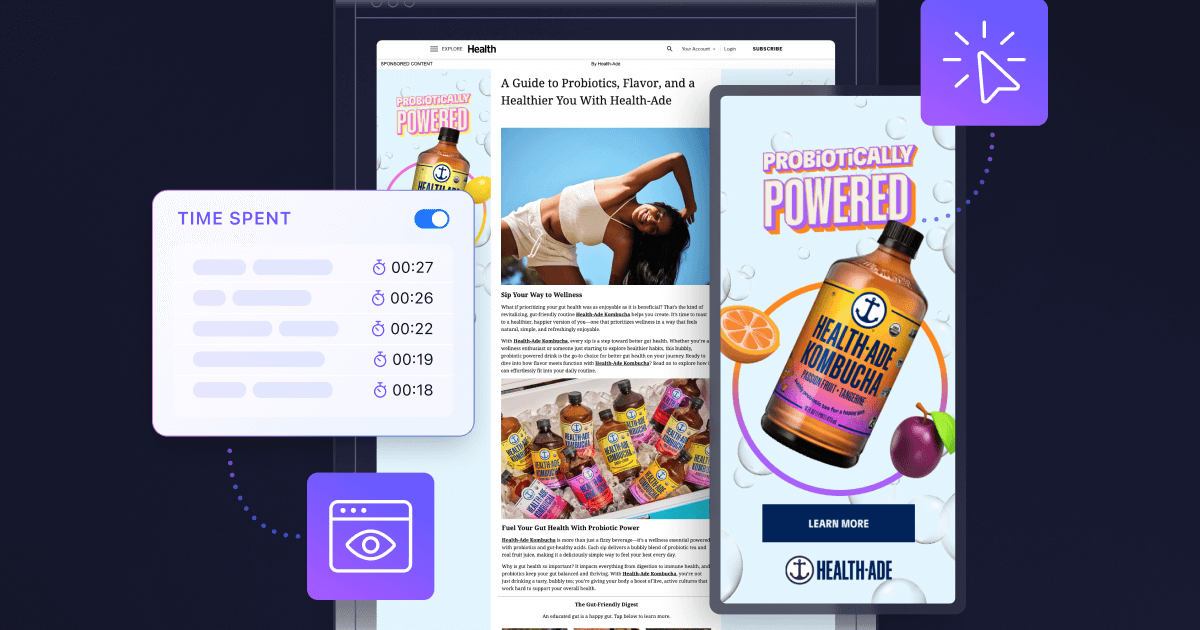Seamless Selling: How to Write Native Ads That Resonate
.png)
Writing a native advertisement, often referred to simply as a native ad, is an art that blends marketing, psychology, and storytelling. This form of advertising aims to match the style and format of the platform on which it appears, creating a seamless and less intrusive experience for the audience. Writing an effective native ad requires that you always keep this goal in mind.
Understanding the Essence of Native Advertising
A native ad is fundamentally different from traditional ads. Instead of blatant promotion, it's designed to provide value through content that is relevant and interesting to the audience of the platform where it's published. The goal is to engage the reader, viewer, or listener by offering content that is informative, entertaining, or both, while subtly integrating brand messaging.
The Key Steps to Writing an Effective Native Ad
1. Know the Audience
The first step in crafting a native ad is understanding the target audience. The content must resonate with their interests, needs, and challenges. It's crucial to conduct thorough research on the demographics, preferences, and behaviors of the intended audience. This research guides the tone, style, and content of the ad.
2. Choose the Right Platform
Selecting the right platform is crucial. The chosen platform should align with the interests and habits of the target audience. Whether it's a social media channel, a specific blog, or an online magazine, the platform determines the format and approach of the ad.
3. Align with the Platform’s Style
A native ad should seamlessly blend with the content that surrounds it. This means adopting the tone, writing style, and visual aesthetics of the platform. The ad should look and feel like the other content that the audience is consuming on that site.
4. Provide Value
The core of a native ad is the value it provides to the reader. Whether it's educational, informative, or entertaining, the content should offer something beneficial. This could be insights, tips, solutions to problems, or simply entertainment. The key is to engage the audience with content they find useful or enjoyable.
5. Integrate Branding Subtly
While traditional ads are overt in their branding, native ads require a more subtle approach. The brand should be integrated seamlessly into the content. This could be through a casual mention, a relevant story, or a case study. The idea is to associate the brand with the value provided by the content without being too salesy.
6. Craft a Compelling Narrative
Storytelling is a powerful tool in native advertising. A compelling narrative can engage the audience emotionally, making the content more memorable and impactful. The story should relate to the brand in a natural way, without forcing a sales pitch.
7. Include a Clear Call-to-Action
Even though native ads are subtle, they should still include a call-to-action (CTA). The CTA guides the audience on what to do next, whether it’s to learn more, sign up, download a guide, or make a purchase. However, the CTA should fit organically within the content.
8. Optimize for Search Engines
Native ads often live online and thus should be optimized for search engines. This includes using relevant keywords, creating engaging headlines, and ensuring the content is mobile-friendly. SEO helps in increasing the visibility of the ad.
9. Use Visuals Effectively
Visual elements can significantly enhance the appeal of a native ad. Images, videos, infographics, and other visuals should complement the written content and align with the style of the platform. They should be high quality and relevant to the content.
10. Measure and Refine
Finally, it's important to track the performance of the native ad. Metrics such as engagement rates, click-through rates, and conversion rates provide insights into how well the ad is resonating with the audience. This data should be used to refine and improve future native ads.
Conclusion
Writing a native ad requires a delicate balance of promotional and informational content. It's about creating a connection with the audience through content that is engaging, valuable, and relevant, all while subtly integrating brand messaging. The success of a native ad lies in its ability to blend in, providing a seamless and enjoyable experience for the audience, and ultimately, driving them to engage with the brand in a meaningful way.
By following these steps and keeping the audience’s needs and preferences at the forefront, businesses and marketers can create effective native ads that not only reach but resonate with their target audience. The key is to remember that native advertising is not just about selling a product or service; it’s about building a relationship with the audience through content that enriches their experience on the platform.

.jpg)


